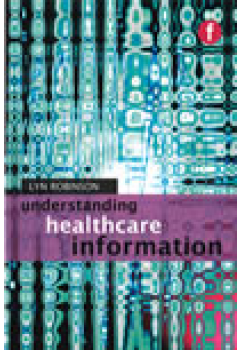
Primary tabs
You don't need to be an ALA Member to purchase from the ALA Store, but you'll be asked to create an online account/profile during checkout to proceed. This Web Account is for both Members and non-Members. Note that your ALA Member discount will be applied at the final step of the checkout process.
If you are Tax-Exempt, please verify that your account is currently set up as exempt before placing your order, as our new fulfillment center will need current documentation. Learn how to verify here.
- Description
- Table of Contents
- About the author
- Reviews
In an age of internet resource guides, which suffer from the malaise of being outdated before they are published, this much-needed publication addresses the information chain in its entirety, offering a timeless method of understanding healthcare information resources. The author takes a holistic approach in her consideration of healthcare information, with the aim of building an overall understanding of it within the information society. The text analyses the domain of healthcare information, its organizational structures and history, and the nature of its resources and the drivers for change affecting them. It looks at examples of healthcare information resources from the perspective of different user groups, including healthcare professionals and consumers, and goes on to highlight areas of research into healthcare information, including evaluation studies, user and impact studies, bibliometrics, metadata and Web 2.0. The key areas covered are:
- the healthcare information domain
- the history of healthcare and its information environment
- producers and users of healthcare information
- healthcare information organization
- healthcare information sources, services and retrieval
- healthcare information and knowledge management.
Introduction
- The healthcare information audience
- Information science and domain analysis
- Outline of the book
- References
- Further reading
- Our website
1. The healthcare information domain
- Introduction
- Nature of the discipline
- Nature of healthcare knowledge
- Structures and institutions
- Drivers for change
- Conclusion
- References
- Further reading
2. History of healthcare and its information environment
- Introduction
- The ancient world
- The classical world
- The medieval world
- Renaissance and Enlightenment
- The 19th century to the present day
- Conclusion
- References
- Further reading
3. Producers and users of healthcare information
- Introduction
- Producers of healthcare information
- Users of healthcare information
- Conclusions
- References
- Further reading
4. Healthcare information organization
- Introduction
- Organizing healthcare information: overview
- Dictionaries and glossaries
- Classifications and taxonomies
- Subject headings and thesauri
- Meta-vocabularies
- Abstracting and indexing of healthcare information
- Conclusion
- References
- Further reading
5. Healthcare information sources, services and retrieval
- Introduction
- Primary sources
- Secondary sources
- Tertiary sources
- Quaternary sources
- Conclusion
- References
- Further reading
6. Healthcare information and knowledge management
- Introduction
- Healthcare libraries and information services
- Managing healthcare information
- Providing healthcare information
- Standards, evaluation and impact
- Conclusion
- References
- Further reading
Afterword
- Keeping up to date
Lyn Robinson
Lyn Robinson is Program Director for Library and Information Science at City University London, and a well-known writer and presenter in the subject. She is also the author of Understanding Healthcare Information.
"This is highly recommended for any academic or medical library. Librarians will also find this book to be a scholarly addition to their professional collections."
— Collection Building
"Understanding Healthcare Information is a necessary prescription to overcome the built-in inertia in the information-related behaviour of healthcare workers. This essential text for information providers in the healthcare sector also includes comprehensive bibliographic and electronic links."
— Library Review


